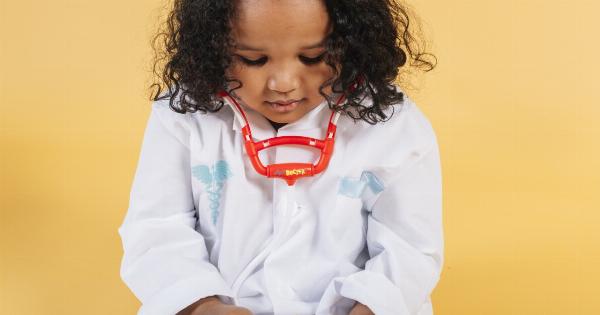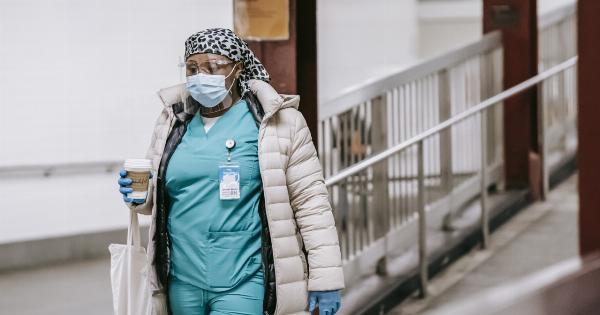Pneumonia is a serious disease that affects millions of people worldwide, but its impact is particularly devastating among children.
According to recent statistics, a child is dying from pneumonia every 39 seconds, making it the leading cause of death among children under the age of five. This alarming figure highlights the urgent need for global action to prevent and treat this deadly disease.
The Global Burden of Pneumonia
Pneumonia is an infection that inflames the air sacs in one or both lungs. It can be caused by a variety of pathogens, including bacteria, viruses, and fungi.
The symptoms of pneumonia can vary from mild to severe, and in some cases, it can be life-threatening. Children, especially those with weakened immune systems or underlying health conditions, are particularly vulnerable to the complications of pneumonia.
While pneumonia affects people of all ages, it poses a significant burden on children in low- and middle-income countries.
In these regions, access to proper healthcare, clean water, nutrition, and vaccination is limited, exacerbating the risk of pneumonia and its severe consequences. Factors such as malnutrition, indoor air pollution, and lack of breastfeeding further contribute to the vulnerability of children to pneumonia.
The Impact of Pneumonia on Children’s Lives
Every year, pneumonia claims the lives of more than 800,000 children under the age of five. This staggering number translates to a child dying every 39 seconds, or nearly 2,200 children per day.
The majority of these deaths occur in sub-Saharan Africa and South Asia, where healthcare systems are often inadequate and resources are limited.
The effects of pneumonia extend beyond mortality rates. Many children who survive the disease suffer long-term health complications, including chronic respiratory problems, impaired lung development, and cognitive impairments.
These consequences not only impact the child but also strain healthcare systems and hinder economic development in affected communities.
Preventing Pneumonia: Vaccination and Beyond
Vaccination plays a crucial role in preventing pneumonia.
The introduction of vaccines against common pathogens that cause pneumonia, such as Streptococcus pneumoniae and Haemophilus influenzae type b, has significantly reduced the burden of pneumonia in many countries. However, access to these vaccines remains a challenge in resource-constrained settings, and there is a need for continued efforts to ensure equitable vaccine access globally.
In addition to vaccination, other preventive measures can help reduce the incidence of pneumonia.
Adequate nutrition, exclusive breastfeeding for the first six months of life, improved access to clean water and sanitation facilities, and reduction of air pollution are all crucial in preventing pneumonia among children.
Improving Diagnosis and Treatment
Early diagnosis and appropriate treatment are essential to reduce pneumonia-related child mortality. Recognizing the signs and symptoms of pneumonia, such as cough, difficulty breathing, and fever, can prompt caregivers to seek timely medical care.
Access to affordable and quality healthcare services, including trained healthcare providers and essential medications, is vital in saving children’s lives.
Furthermore, investing in research and development for new diagnostic tools and more effective treatments can significantly advance pneumonia management.
Innovative technologies, such as point-of-care diagnostic tests and affordable antibiotics, can improve the accuracy and speed of diagnosis, enabling prompt and appropriate treatment.
The Role of International Organizations and Governments
Addressing the global burden of pneumonia requires a comprehensive and coordinated effort from international organizations, governments, healthcare providers, and communities.
It is essential to prioritize pneumonia as a public health issue and allocate resources accordingly. This includes investment in healthcare infrastructure, training of healthcare workers, and strengthening of healthcare systems to ensure access to quality care for all children.
International organizations, such as the World Health Organization (WHO) and UNICEF, play a critical role in advocating for pneumonia prevention and control.
They provide technical guidance, support vaccine procurement and delivery, and facilitate knowledge sharing among countries.
Community Engagement and Education
Engaging communities and raising awareness about pneumonia are key strategies in combating this disease.
Educating caregivers about the importance of vaccination, breastfeeding, maintaining good hygiene practices, and seeking medical care promptly can empower communities to take proactive measures against pneumonia.
Furthermore, community health workers can play a vital role in delivering healthcare services, including pneumonia prevention and treatment, at the grassroots level.
Strengthening their training and capacity can improve early detection and management of pneumonia cases, leading to better health outcomes for children.
A Call to Action: Saving Lives, One Child at a Time
With a child dying from pneumonia every 39 seconds, urgent action is needed to prevent needless deaths.
Governments, international organizations, healthcare providers, and communities must work together to improve access to preventive strategies, diagnostic tools, and life-saving treatments.
Investment in pneumonia prevention and control can have far-reaching benefits.
By reducing child mortality, improving healthcare systems, and promoting overall child health, we pave the way for a healthier and more prosperous future for generations to come.






























